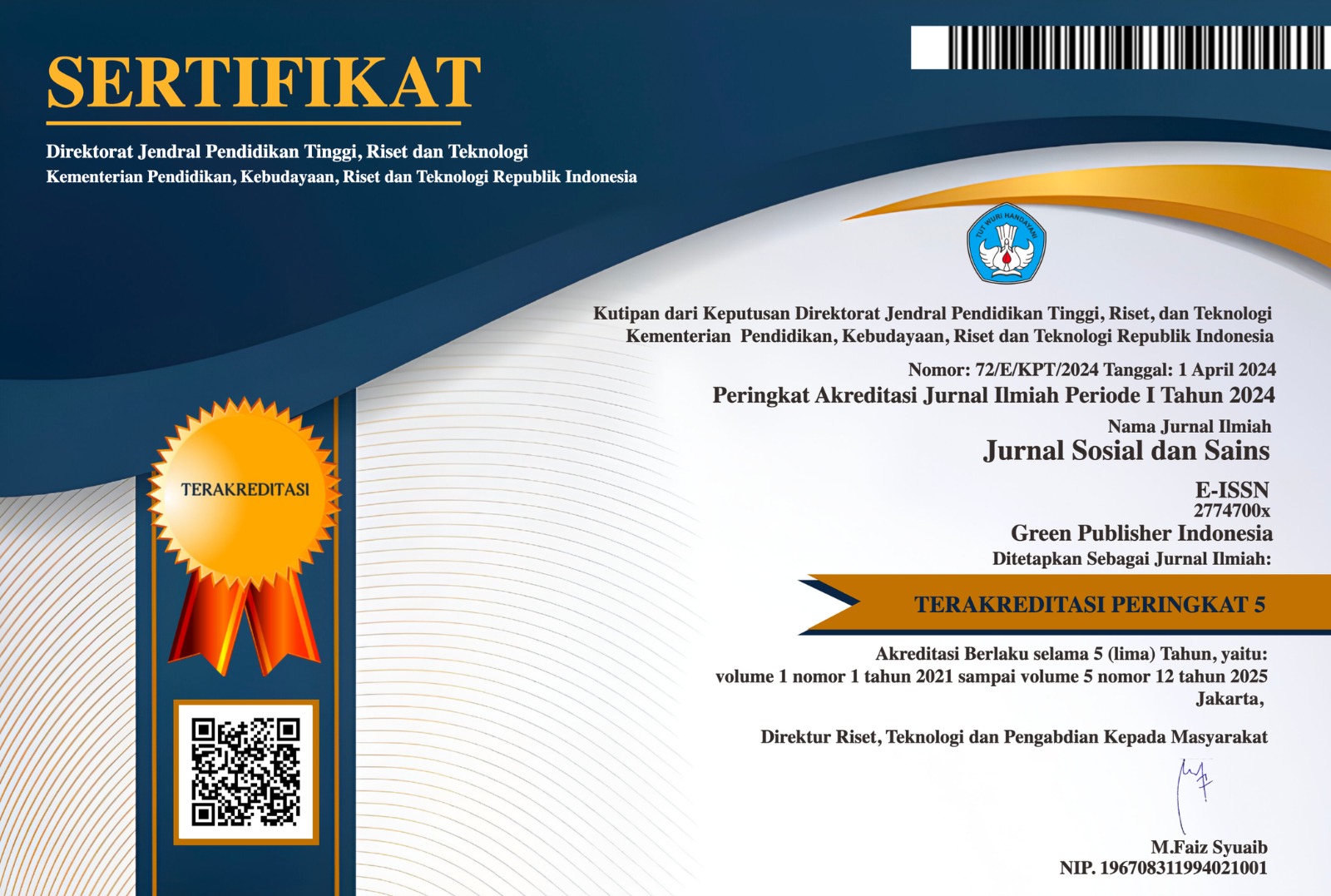Pengaruh Heat Treatment Setelah Water Cooling pada Baja ST 60 Terhadap Sifat Mekanik
DOI:
https://doi.org/10.59188/jurnalsosains.v5i9.32492Keywords:
ST 60 Steel, Heat Treatment, Quenching, Holding Time, Vickers HardnessAbstract
This study aims to determine the effect of heat treatment and quenching processes on the hardness value of ST 60 steel. ST 60 steel is a medium carbon steel with a carbon content of 0.564% and manganese content of 0.697% which has hard and wear-resistant properties. The research method uses an experimental approach with heat treatment process at 950°C temperature with holding time variations of 20 and 50 minutes, followed by quenching with water media. Hardness testing was performed using the Vickers method with an indentation load of 5 kgf at 5 different points for each specimen. The results showed that the hardness value of ST 60 steel increased significantly after heat treatment. Maximum hardness was achieved at 20 minutes holding time with a value of 734.521 HVN, increasing 137% compared to the initial material which had a hardness of 309.308 HVN. At 50 minutes holding time, the hardness obtained was 615.924 HVN. The increase in hardness is caused by the formation of martensite structure due to rapid cooling which causes carbon atoms to be trapped in supersaturated solid solution. This research shows that holding time variation affects the hardness value, where the optimal holding time is 20 minutes to achieve maximum hardness in ST 60 steel.
, ,, ,
References
Cui, L., Wang, J., Zhang, H., & Liu, S. (2023). Effect of microstructure density on mechanical properties of medium carbon steel. Materials Science and Engineering A, 865, 144621.
Ervan Agustian, & Somawardi. (2021). Pengaruh variasi holding time terhadap kekerasan baja karbon menengah. Jurnal Teknik Mesin, 15(2), 89-95.
Farhan, M., Bukhari, A., Hamdani, R., & Ilyas Yusuf, M. (2021). Pengaruh temperatur austenit terhadap kekerasan dan ketangguhan baja ST 60. Jurnal Material dan Metalurgi, 8(1), 45-52.
Fenoria Putri, A., & Sairul Effendi, M. (2021). Analisis struktur mikro martensit pada proses quenching baja karbon. Jurnal Ilmu Material, 12(3), 156-163.
Hanif Fadhlurrohman Aziz, et al. (2023). Variasi media quenching terhadap sifat kekerasan baja dan optimasi waktu produksi. Jurnal Teknologi Material, 18(2), 78-85.
Herizen, D. (2020). Pengaruh kecepatan pendinginan terhadap tingkat kekerasan material baja. Jurnal Rekayasa Material, 7(4), 201-208.
Iriandoko, K., Akbar, M., & Sindy Pramesty, N. (2020). Karakteristik kekerasan dan ketahanan aus baja ST 60 dengan kandungan mangan tinggi. Jurnal Teknik Material, 14(1), 23-30.
Jiang, Y., Chen, X., Li, W., & Wang, Z. (2019). Heat treatment effects on ST 60 steel hardness using various salt water media. Materials Processing Technology, 285, 116789.
Korawan, R. (2022). Hubungan antara nilai kekerasan dan sifat mekanis material logam. Jurnal Metalurgi Indonesia, 25(3), 134-142.
Murjito, S. (2022). Pengaruh holding time pada heat treatment terhadap kekerasan baja ST 60 dengan media pendingin air. Jurnal Teknik Manufaktur, 16(2), 67-74.
Nasution, H. (2014). Proses heat treatment untuk peningkatan sifat mekanis baja. Jurnal Teknologi Material, 9(1), 12-18.
Setiadi, R., & Samlawi, T. (2019). Media pendingin dalam proses quenching untuk pengerasan logam. Jurnal Proses Manufaktur, 13(2), 89-96.
Siswara Arlingga, A. (2021). Perubahan sifat fisis dan mekanis akibat media pendingin dalam pengerjaan panas. Jurnal Material Engineering, 11(4), 178-185.
Suhardiman, K., & Prayogi, D. (2019). Heat treatment sebagai metode peningkatan karakteristik mekanis logam. Jurnal Ilmu Material dan Metalurgi, 22(2), 45-53.
Syaifullah, M., & Subhan, A. (2021). Karakteristik fisik dan termal baja ST 60. Jurnal Sains Material, 17(1), 34-41.
Wibowo, B. T. (2006). Pengaruh tempering dengan quenching terhadap sifat fisis dan mekanis baja ST 60. Skripsi, Universitas Sebelas Maret, Surakarta.
Downloads
Published
How to Cite
Issue
Section
License
Copyright (c) 2025 Muhammad Herlingga

This work is licensed under a Creative Commons Attribution-ShareAlike 4.0 International License.
Authors who publish with this journal agree to the following terms:
- Authors retain copyright and grant the journal right of first publication with the work simultaneously licensed under a Creative Commons Attribution-ShareAlike 4.0 International (CC-BY-SA). that allows others to share the work with an acknowledgement of the work's authorship and initial publication in this journal.
- Authors are able to enter into separate, additional contractual arrangements for the non-exclusive distribution of the journal's published version of the work (e.g., post it to an institutional repository or publish it in a book), with an acknowledgement of its initial publication in this journal.
- Authors are permitted and encouraged to post their work online (e.g., in institutional repositories or on their website) prior to and during the submission process, as it can lead to productive exchanges, as well as earlier and greater citation of published work.








